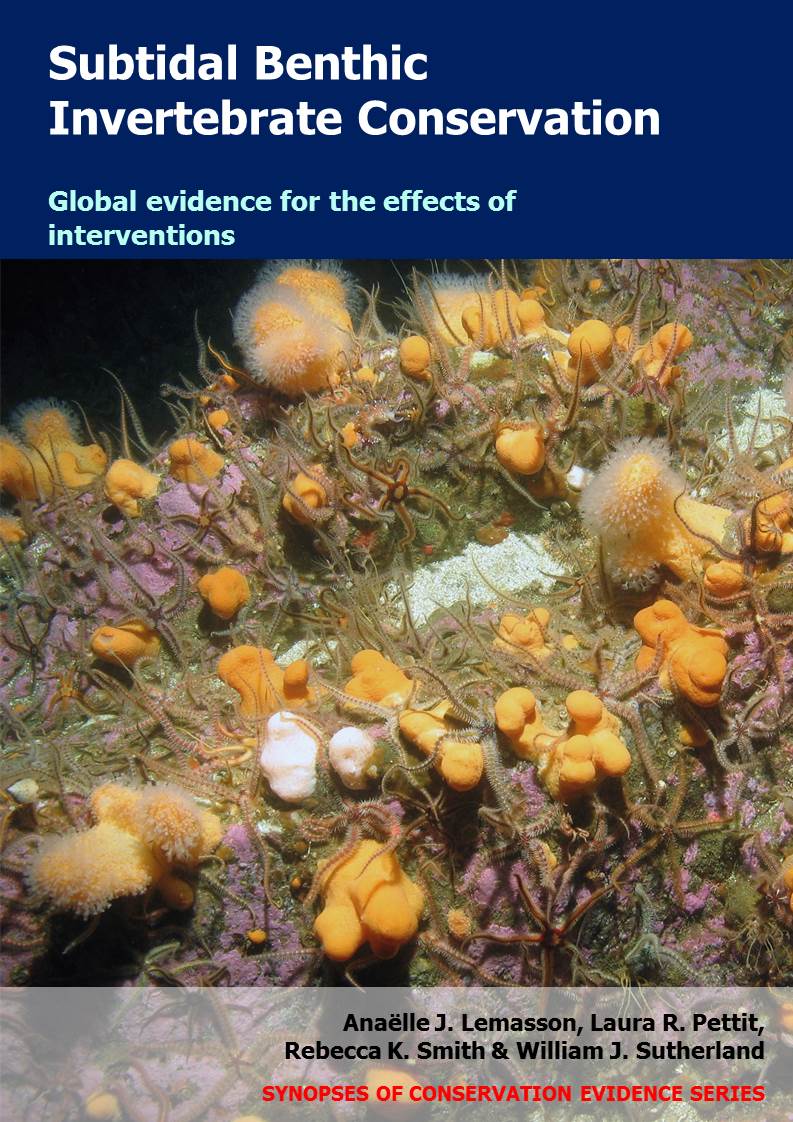Background information and definitions
Artificial structures are proliferating in the marine environment, with wide-scale negative impacts for biodiversity (Ido & Shimrit 2015). Green engineering, also referred to as “eco-engineering”, aims at mitigating the negative ecological impacts of artificial structures, and maximising their potential positive outcomes (Dafforn et al. 2015; Firth et al. 2014; Ido & Shimrit 2015). Green-engineering techniques include the use of natural or eco-friendly materials, such as wood, shell, rock, the addition of structural features (rockpools, crevices, ridges) or the seeding of native habitat-forming (biogenic) species, onto artificial structures (Dafforn et al. 2015; Firth et al. 2014).
Subsea cables and rock dump (used to stabilise and protect underwater structures, such as oil and gas platforms, as well as subsea cables and pipelines) can impact subtidal benthic invertebrates through physical damage, loss of natural sediment and changes in habitat characteristics. Modifying rock dump (either before or after deployment) to make it as similar as possible to natural hard substrates, such as bedrock or rocky reef, can potentially provide suitable replacement habitat for subtidal benthic invertebrate species commonly found in the area. In addition, subsea cables and pipelines could be covered with artificial reefs, or with materials that encourage the accumulation of natural sediment, to potentially promote colonisation by subtidal benthic invertebrates associated with natural hard rocky seabed or natural soft sediments, and enhance local biodiversity.
Evidence for other interventions related to rock dumping and offshore industries are summarised in the following chapters: “Threat: Energy production and mining” and “Threat: Transportation and service corridors”. Evidence for other interventions related to subsea cables and pipelines are summarised under “Threat: Energy production and mining – Bury pipelines instead of surface laying and rock dumping”, and “Threat: Transportation and service corridors – Bury cables and pipelines in the seabed rather than laying them on the seabed” and “Remove utility and service lines after decommissioning”.
Dafforn K.A., Mayer-Pinto M., Morris R.L. & Waltham N.J. (2015) Application of management tools to integrate ecological principles with the design of marine infrastructure. Journal of Environmental Management, 158, 61–73.
Firth L.B., Thompson R.C., Bohn K., Abbiati M., Airoldi L., Bouma T.J., Bozzeda F., Ceccherelli V.U., Colangelo M.A., Evans A., Ferrario F., Hanley M.E., Hinz H., Hoggart S.P.G., Jackson J.E., Moore P., Morgan E.H., Perkol-Finkel S., Skov M.W., Strain E.M., van Belzen J. & Hawkins S.J. (2014) Between a rock and a hard place: Environmental and engineering considerations when designing coastal defence structures. Coastal Engineering, 87, 122–135.
Ido S. & Shimrit P.F. (2015) Blue is the new green–ecological enhancement of concrete based coastal and marine infrastructure. Ecological Engineering, 84, 260–272.






)_2023.JPG)














